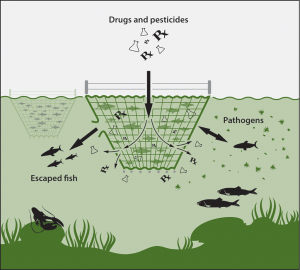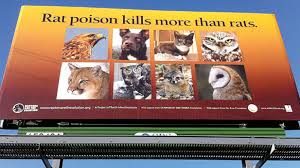 (Beyond Pesticides, May 14, 2018)Â Under EPA Administrator Pruittâs proposed âtransparencyâ plan, the public will still lack access to key data about the effects and efficacy of commercial poisons approved for sale and application in their communities and homes.
(Beyond Pesticides, May 14, 2018)Â Under EPA Administrator Pruittâs proposed âtransparencyâ plan, the public will still lack access to key data about the effects and efficacy of commercial poisons approved for sale and application in their communities and homes.
Tell EPA to adopt a real transparency plan for pesticides!
The proposed policy, posted on April 30 in the Federal Register, declares that it will âhelp ensure that EPA is pursuing its mission of public health and the environment in a manner that the public can trust and understand,â yet it applies only to a very limited set of studies used to support certain EPA regulations. The pesticide registration and review processes are particularly lacking in transparency, opportunity for public review, and access to data. Because pesticides are toxic chemicals broadcast into the environment, nowhere is transparency more important than in pesticide registration.
The proposed new policy does not cover pesticide registrations, warning labels, use restrictions, or proof of effectiveness. In the current process, the pesticide manufacturer produces the underlying data for these EPA approvals and controls access to them. Thus, despite Pruittâs sweeping claims of âtransparency in regulatory scienceâ:
- The public does not have access to the underlying data provided by the manufacturer to justify registering a new pesticide for commercial distribution;
- Industry will not have to provide the data used to assess health and environmental effects and farmworker impacts to set allowable dietary and non-dietary exposure limits; and
- On the productâs efficacy, the public also does not have access to the underlying data, nor does EPA even review manufacturer data on product effectiveness, except for very limited purposes.
To ensure full review, it is critical that the public and independent scientific community have complete access to safety testing data before poisonous pesticide products enter the marketplace. If EPA applies the proposed policy to pesticides, the failure to allow consideration of independent study results without disclosing confidential patient information will cripple the validity of EPA safety reviews. Furthermore, the failure to label all ingredients in pesticide products used by the public runs contrary to the basic principle of informed decision making.
Mr. Pruittâs plan does not enable the public to have any meaningful information about âenvironmental health risk or safety risk,â as he claims. Under a false flag of scientific transparency, Mr. Pruittâs scheme hobbles scientific work used to protect the public, but shields industry data that may demonstrate a public health peril.
EPA pesticide regulation is based on secret science.
Although EPA has proposed a rulemaking that purports to make science used in EPA regulatory decision making transparent and available to the public, the proposal applies only to âsignificantâ EPA rulemakings, but not to matters such as pesticide registrations, through which private companies seek authorization to market products that may be harmful to public health and the environment. The pesticide registration and review processes are particularly lacking in transparency and opportunity for public review and access to data.
Data used to approve pesticides are not available to the public.
Pesticides are registered (authorized for use) based on studies and data submitted by the manufacturer (registrant) ânot based on science conducted or commissioned by EPA. Such registrant data are not available for public review until after the pesticide is registered. The nonpublic data submitted by the registrant are used by EPA to assess health and environmental effects of the pesticide and impacts on farmworkers, and to set allowable human exposures through dietary and non-dietary routes âall without any opportunity for public review of the underlying data.
After registration, the public can access the materials on the basis of which the registration was granted only through making requests under the Freedom of Information Act (FOIA), a lengthy process. Even then, much information is withheld as purportedly âconfidential.â If problems are identified that uncover a hazard from the pesticide, a member of the public would need to petition for a proceeding to cancel the registration, a long and unwieldy process during which the pesticide remains on the market.
EPAâs registration, registration review, and cancellation of pesticides raise numerous issues regarding the application of legitimate scientific process, risk assessment, exposure assumptions, sensitive populations, and the âreasonablenessâ of what are found to be âacceptableâ hazards. Transparency of agency processes and underlying data is key to allowing public participation concerning these issues.
Full disclosure of known and unknown adverse effects is needed.Â
EPA does not currently require that registrants disclose data submitted to EPA or label pesticides (including household pesticides) with data concerning the full extent of knowledge and/or ignorance of possible adverse effects, including data gaps and chronic health effects. Registrantsâ exposure and toxicology studies are not released to the public so that any interested stakeholder can review them prior to a product being permitted on the market.
Conditional registration is missing crucial data.
Pesticide registrations under special circumstances, known as âconditional registrations,â allow widespread use of toxic chemicals that are not fully tested. Conditional registration of pesticides allows market entry for a product in the absence of certain data normally required for registration. As one glaring example, EPA came under scrutiny when it conditionally registered the neonicotinoid pesticide clothianidin, tied to dramatic declines in pollinators, without required pertinent field data on honeybees, even though the pesticide is known to pose risks to these vulnerable pollinators.
Efficacy data on pesticide products are lacking.
The public does not have access to, and EPA does not review, manufacturer data on pesticide efficacy, even though the statutory registration standard requires weighing the risks of pesticides against their benefits. Without efficacy information, the real benefits of a pesticide are unknown, and the reasonableness of pesticide use cannot be assessed. The lack of efficacy data review results in escalating and predictable insect and weed resistance, unnecessary increases in pesticide use, and increased risk for farmers of crop loss and economic damage. The only instance in which EPA evaluates pesticide efficacy is as a part of public health (not agricultural) pesticide registrations, and even this is without public disclosure or opportunity for comment.
Secret ingredients in pesticide products are not disclosed.
Currently, pesticide labels do not identify âinertâ ingredients that have been classified as hazardous under a variety of environmental laws, including the Clean Air Act, the Clean Water Act, and the Emergency Planning and Community Right to Know Act. Disclosure would provide information about almost 400 hazardous chemicals in pesticide products.
Only active ingredients, not formulations, are tested.
EPA does not require testing data on the full formulation of a pesticide product, including all of the âinertâ ingredients. Thus, data on the human health and environmental effects of the actual product on the market are entirely lacking.
The federal government needs a vision for pesticide policy across relevant agencies that seeks to replace outdated approaches and technologies, reliant on toxic chemicals, with green approaches advanced through incentives, assistance, and restrictions. This cannot be achieved without full transparency and disclosure of toxic hazards of pesticide products in the marketplace. Without full information on pesticide hazards, access to underlying data on hazards, and a transparent assessment of the reasonableness of risk (given the availability of less or non-toxic alternatives), the public is left in the dark. Credible reviews, subject to public oversight, are essential in EPAâs regulation of pesticides to prevent contamination of air, land, water, and food.
Tell EPA to adopt a real transparency plan for pesticides!
Letter to EPA Docket (Docket No. EPA-HQ-OA-2018-0259)
[Send to [email protected]]
Under the proposed âtransparencyâ plan, the public will still lack access to key data about the effects and efficacy of commercial poisons approved for sale and application in their communities and homes. The proposed policy declares that it will âhelp ensure that EPA is pursuing its mission of public health and the environment in a manner that the public can trust and understand,â yet it applies only to a very limited set of studies used to support certain EPA regulations. The pesticide registration and review processes are particularly lacking in transparency, opportunity for public review, and access to data. Because pesticides are toxic chemicals broadcast into the environment, nowhere is transparency more important than pesticide registration.
The proposed new policy does not cover pesticide registrations, warning labels, use restrictions, or proof of effectiveness. Because the pesticide manufacturer produces the underlying data for these EPA approvals and controls access to them, no transparency will be provided in pesticide registration, in which:
* The public does not have access to the underlying data provided by the manufacturer to justify registering a new pesticide for commercial distribution;
* Industry will not have to provide the data used to assess health and environmental effects and farmworker impacts to set allowable dietary and non-dietary exposure limits; and
* Neither the public nor EPA has access to the underlying efficacy data, except for very limited purposes.
To ensure full review, it is critical that the public and independent scientific community have complete access to safety testing data before pesticide products enter the marketplace. If EPA applies the proposed policy to pesticides, the failure to allow consideration of independent study results without disclosing confidential patient information will cripple the validity of EPA safety reviews. Furthermore, the failure to label all ingredients in pesticide products used by the public runs contrary to the basic principle of informed decision making.
The proposal does not prevent EPA from issuing conditional registrations in the absence of required data, nor does it require industry to make that data publicly available at a later date.
It does not grant the public access to meaningful information about âenvironmental health risk or safety risk,â as claimed. Instead, the policy hobbles scientific work used to protect the public while shielding industry data that may demonstrate the public health peril.
EPA pesticide regulation is based on secret science.
Although the proposed rulemaking purports to make science used in EPA regulatory decision making transparent and available to the public, by its own terms it applies only to âsignificantâ EPA rulemakings, where EPA is seeking to protect public health and the environment, but not to matters such as pesticide registrations, through which private companies seek authorization to market products that may be harmful to public health and the environment. The pesticide registration and review processes are particularly lacking in transparency and opportunity for public review and access to data.
Data used to approve pesticides are not available to the public.
Pesticides are registered (authorized for use) based on studies and data submitted by the manufacturer (registrant). Such registrant data are not available for public review until after the pesticide is registered. The nonpublic data submitted by the registrant are used by EPA to assess health and environmental effects of the pesticide and impacts on farmworkers, and to set allowable human exposures through dietary and non-dietary routes âall without any opportunity for public review of the underlying data.
After registration, the public can access the materials on the basis of which the registration was granted (which still may not include all underlying data) only through the Freedom of Information Act (FOIA), a lengthy process. Even then, much information is withheld as purportedly âconfidential.â If problems are identified that uncover a hazard from the pesticide, a member of the public would need to petition for a proceeding to cancel the registration, a long and unwieldy process during which the pesticide remains on the market.
EPAâs registration, registration review, and cancellation of pesticides raise numerous issues regarding the application of legitimate scientific process, risk assessment, exposure assumptions, sensitive populations, and the âreasonablenessâ of what are found to be âacceptableâ hazards. True transparency of agency processes and underlying data is key to allowing public participation concerning these issues. Â
Full disclosure of known and unknown adverse effects is needed.Â
EPA does not currently require that registrants disclose data submitted to EPA or label pesticides (including household pesticides) with data concerning the full extent of knowledge and/or ignorance of possible adverse effects, including data gaps and chronic health effects. Registrantsâ exposure and toxicology studies are not released to the public so that any interested stakeholder can review them prior to a product being permitted on the market.
Conditional registration is missing crucial data.
Conditional registrations allow widespread use of toxic chemicals that are not fully tested. Conditional registration of pesticides allows market entry for a product in the absence of certain data normally required for registration. As one glaring example, EPA came under scrutiny when it conditionally registered the neonicotinoid pesticide chlothianidin, tied to dramatic declines in pollinators, without required pertinent field data on honeybees, even though the pesticide is known to pose risks to these vulnerable pollinators.
Efficacy data on pesticide products are lacking.
The public does not have access to, and EPA does not review, manufacturer data on pesticide efficacy, even though the statutory registration standard requires weighing the risks of pesticides against their benefits. Without efficacy information, the real benefits of a pesticide are unknown, and the reasonableness of pesticide use cannot be assessed. The lack of efficacy data review results in escalating and predictable insect and weed resistance, unnecessary increases in pesticide use, and increased risk for farmers of crop loss and economic damage. The only instance in which EPA evaluates pesticide efficacy is as a part of public health (not agricultural) pesticide registrations, and even this is without public disclosure or opportunity for comment.
âSecret ingredientsâ in pesticide products are not disclosed.
Currently, pesticide labels do not identify âinertâ ingredients that have been classified as hazardous under a variety of environmental laws, including the Clean Air Act, the Clean Water Act, and the Emergency Planning and Community Right to Know Act. Disclosure would provide information about almost 400 hazardous chemicals in pesticide products.
Only active ingredients, not formulations, are tested.
EPA does not require testing data on the full formulation of a pesticide product, including all of the âinertâ ingredients. Thus, data on the human health and environmental effects of the actual product on the market are entirely lacking.
The federal government needs a vision for pesticide policy across relevant agencies that seeks to replace outdated approaches and technologies, reliant on toxic chemicals, with green approaches advanced through incentives, assistance and restrictions. This cannot be achieved without full transparency and disclosure of toxic hazards of pesticide products in the marketplace. Without full information on pesticide hazards, access to underlying data on hazards, and a transparent assessment of the reasonableness of risk (given the availability of less or non-toxic alternatives), the public is left in the dark. Credible reviews, subject to public oversight, are essential in EPAâs regulation of pesticides to prevent contamination of air, land, water, and food.
Sincerely,
 (Beyond Pesticides, May 24, 2018) Californiaâs Department of Pesticide Regulation (DPR) is falling short of protecting vulnerable communities in the state, especially low-income and communities of color. This, according to a new report by California Environmental Justice Alliance (CEJA), which assesses state agencies on eight environmental justice principles. The poor showing by DPR comes at the forefront of reports that the stateâs pesticide use has increased, nearing record highs.
(Beyond Pesticides, May 24, 2018) Californiaâs Department of Pesticide Regulation (DPR) is falling short of protecting vulnerable communities in the state, especially low-income and communities of color. This, according to a new report by California Environmental Justice Alliance (CEJA), which assesses state agencies on eight environmental justice principles. The poor showing by DPR comes at the forefront of reports that the stateâs pesticide use has increased, nearing record highs.








 (Beyond Pesticides, May 23, 2018) Earlier this month, the Connecticut state legislature voted to ban the use of residential pesticide misting systems. (These are devices that are typically placed outdoors and spray insecticides –mostly in an attempt to control mosquitoes.) This is the latest move from a state legislature that has also recently banned the use of
(Beyond Pesticides, May 23, 2018) Earlier this month, the Connecticut state legislature voted to ban the use of residential pesticide misting systems. (These are devices that are typically placed outdoors and spray insecticides –mostly in an attempt to control mosquitoes.) This is the latest move from a state legislature that has also recently banned the use of  (Beyond Pesticides, May 22, 2018)Â AÂ staggering
(Beyond Pesticides, May 22, 2018)Â AÂ staggering  (Beyond Pesticides, May 18, 2018) The U.S. Department of Agriculture (USDA) is putting an end to the process of
(Beyond Pesticides, May 18, 2018) The U.S. Department of Agriculture (USDA) is putting an end to the process of  (Beyond Pesticides, May 17, 2018)Â Among the many reports of the salutary effects of nature on human health and well-being comes
(Beyond Pesticides, May 17, 2018)Â Among the many reports of the salutary effects of nature on human health and well-being comes  (Beyond Pesticides, May 16, 2018) Northern Harvest Sea Farms, an
(Beyond Pesticides, May 16, 2018) Northern Harvest Sea Farms, an 
 (Beyond Pesticides, May 15, 2018)Â According to a new report from the Center for Biological Diversity (CBD), hundreds of thousands of pounds of pesticides are sprayed on lands that are designated as refuges for wildlife and protected under U.S. law. Approximately 490,000 pounds of pesticides have been sprayed on crops grown in national wildlife refuges in 2016 alone. Pesticide use in these sensitive areas poses risks to pollinators, aquatic organisms, migratory birds, and other wildlife on refuges that were created to protect them.
(Beyond Pesticides, May 15, 2018)Â According to a new report from the Center for Biological Diversity (CBD), hundreds of thousands of pounds of pesticides are sprayed on lands that are designated as refuges for wildlife and protected under U.S. law. Approximately 490,000 pounds of pesticides have been sprayed on crops grown in national wildlife refuges in 2016 alone. Pesticide use in these sensitive areas poses risks to pollinators, aquatic organisms, migratory birds, and other wildlife on refuges that were created to protect them. (Beyond Pesticides, May 14, 2018)Â
(Beyond Pesticides, May 14, 2018)Â 
 (Beyond Pesticides, May 10, 2018) Rodenticides like bromadiolone, used to kill vole populations on farms, act like âsuper-predatorsâ that imperil ecosystem health, according to preliminary results
(Beyond Pesticides, May 10, 2018) Rodenticides like bromadiolone, used to kill vole populations on farms, act like âsuper-predatorsâ that imperil ecosystem health, according to preliminary results  (Beyond Pesticides, May 9, 2018) An insectâs gut microbiome plays an important role in conferring pesticide resistance, according to a new review published in the
(Beyond Pesticides, May 9, 2018) An insectâs gut microbiome plays an important role in conferring pesticide resistance, according to a new review published in the  (Beyond Pesticides, May 8, 2018)Â U.S. Environmental Protection Agency Administrator Scott Pruittâs controversial
(Beyond Pesticides, May 8, 2018)Â U.S. Environmental Protection Agency Administrator Scott Pruittâs controversial  (Beyond Pesticides, May 7, 2018)Â Beyond Pesticides and The Organic Consumers Association (OCA) today responded to a federal judgeâs ruling against Monsanto Co.âs motion to dismiss the groupsâ
(Beyond Pesticides, May 7, 2018)Â Beyond Pesticides and The Organic Consumers Association (OCA) today responded to a federal judgeâs ruling against Monsanto Co.âs motion to dismiss the groupsâ  (Beyond Pesticides, May 6, 2018) The Washington State Department of Ecology (Ecology)
(Beyond Pesticides, May 6, 2018) The Washington State Department of Ecology (Ecology)  (Beyond Pesticides, May 4, 2018)Â
(Beyond Pesticides, May 4, 2018)Â  (Beyond Pesticides, May 3, 2018)Â Hawaiiâs bill to ban the dangerous, neurotoxic pesticide, chlorpyrifos, passed its final hurdle this week in the state legislature. Governor David Ige is expected to readily sign
(Beyond Pesticides, May 3, 2018)Â Hawaiiâs bill to ban the dangerous, neurotoxic pesticide, chlorpyrifos, passed its final hurdle this week in the state legislature. Governor David Ige is expected to readily sign  (Beyond Pesticides, May 2, 2018) Granola, cereal, and wheat crackers all contain âa fair amountâ of glyphosate, the herbicide in Monsantoâs popular Roundup, according to internal emails from the Food and Drug Administration (FDA). Although the results of these tests have not been formally released, FDA had stated it will be conducting tests for glyphosate in food. Previous reports have detailed the presence of glyphosate, the chemical classified as a âprobable carcinogen,â in a wide range of foods and in peopleâs bodies.
(Beyond Pesticides, May 2, 2018) Granola, cereal, and wheat crackers all contain âa fair amountâ of glyphosate, the herbicide in Monsantoâs popular Roundup, according to internal emails from the Food and Drug Administration (FDA). Although the results of these tests have not been formally released, FDA had stated it will be conducting tests for glyphosate in food. Previous reports have detailed the presence of glyphosate, the chemical classified as a âprobable carcinogen,â in a wide range of foods and in peopleâs bodies. (Beyond Pesticides, May 1, 2018) On April 27, 2018, European Union (EU) member states backed a proposal to further restrict uses of bee-toxic neonicotinoids finding the pesticidesâ outdoor uses harm bees. These restrictions go beyond those already put in place in 2013, and now all outdoor uses of clothianidin, imidacloprid, and thiamethoxam will be banned. Uses will only be allowed in permanent greenhouses where contact with bees is not expected. This historic move in Europe comes as the U.S. Environmental Protection Agency (EPA) still drags its feet on finding neonicotinoids are too toxic for bees and other organisms and bans their use.
(Beyond Pesticides, May 1, 2018) On April 27, 2018, European Union (EU) member states backed a proposal to further restrict uses of bee-toxic neonicotinoids finding the pesticidesâ outdoor uses harm bees. These restrictions go beyond those already put in place in 2013, and now all outdoor uses of clothianidin, imidacloprid, and thiamethoxam will be banned. Uses will only be allowed in permanent greenhouses where contact with bees is not expected. This historic move in Europe comes as the U.S. Environmental Protection Agency (EPA) still drags its feet on finding neonicotinoids are too toxic for bees and other organisms and bans their use.
 (Beyond Pesticides, April 27, 2018)Â Â After more than five years of intensive negotiations, European Members of Parliament (MEP) overwhelmingly passed the long-anticipated, new
(Beyond Pesticides, April 27, 2018)Â Â After more than five years of intensive negotiations, European Members of Parliament (MEP) overwhelmingly passed the long-anticipated, new  (Beyond Pesticides, April 26, 2018)Â Each year, the
(Beyond Pesticides, April 26, 2018)Â Each year, the  (Beyond Pesticides, April 25, 2018)Â A class-action lawsuit against two manufacturers of neonicotinoid insecticides is moving ahead in Quebec, Canada after an appeal to block the case by the Canadian government and the chemical companies, Bayer and Syngenta, was dismissed. In February 2018, the case, brought by a beekeeper, was allowed to proceed to trial by the Quebec Superior Court.
(Beyond Pesticides, April 25, 2018)Â A class-action lawsuit against two manufacturers of neonicotinoid insecticides is moving ahead in Quebec, Canada after an appeal to block the case by the Canadian government and the chemical companies, Bayer and Syngenta, was dismissed. In February 2018, the case, brought by a beekeeper, was allowed to proceed to trial by the Quebec Superior Court.
